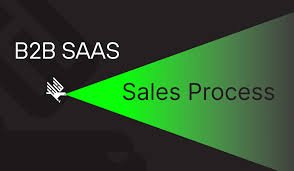In today’s competitive SaaS landscape, businesses need a robust B2B SaaS sales strategy to drive revenue, engage prospects, and retain customers. As the market evolves, so do the approaches to achieving sustainable sales growth. Let’s explore key considerations for building an effective strategy that aligns with modern business needs while prioritizing customer satisfaction.
Understanding the Core of B2B SaaS Sales
B2B SaaS sales is unlike traditional product sales. The emphasis isn’t just on making a one-time transaction but on fostering long-term partnerships through value-driven solutions. Companies often sell software subscriptions, which means the relationship with clients is ongoing, requiring strategies focused on nurturing trust, ensuring retention, and addressing customer pain points.
The question arises: how do you navigate the intricate dynamics of B2B SaaS sales strategy to stand out and thrive? The answer lies in a mix of personalization, value creation, and technology-driven insights.
Adopt a Customer-Centric Approach
One of the most vital components of a successful B2B SaaS sales strategy is understanding your client’s pain points and tailoring solutions to their unique challenges. Unlike traditional products, SaaS offerings often require substantial customization.
Sales teams need to identify how their software fits into a client’s workflow and highlight ROI-driven results. Focus on the client’s business goals and demonstrate how your solution helps them achieve measurable improvements, such as increased efficiency, reduced costs, or streamlined processes.
The Power of Personalization in Outreach
Gone are the days of generic pitches. In 2024, personalization is paramount. Utilize data analytics to segment your audience and create hyper-personalized sales messages. Understand each client’s industry, challenges, and goals, and craft proposals that align with their specific needs.
Automated tools like customer relationship management (CRM) systems help manage leads effectively, but nothing replaces the impact of a well-researched, personal interaction. Ensure your outreach conveys that your software isn’t just another solution—it’s their solution.
Develop a Compelling Value Proposition
A strong value proposition is the backbone of any B2B SaaS sales strategy. Customers need to know why they should choose your product over competitors’. Highlight unique features, the problems your solution solves, and tangible outcomes.
When presenting your software, use metrics and case studies to build credibility. For example, “Our SaaS platform helped Company X reduce operational costs by 30% while doubling efficiency.”
Remember, businesses prioritize ROI, so ensure your pitch answers, “What’s in it for me?”
Mastering the Free Trial Experience
Offering a free trial is common in SaaS sales, but the key to success lies in streamlining the onboarding process. Trials should be seamless, easy to navigate, and deliver quick wins for the client.
Provide tutorials, walkthroughs, and dedicated support during this phase. The faster the client sees value from your product, the higher the chances of converting them into paying customers.
The onboarding process is not just about functionality—it’s about building trust and showing clients they are supported every step of the way.
Leverage Cross-Functional Collaboration
Sales doesn’t operate in isolation in a SaaS environment. A successful B2B SaaS sales strategy often involves collaboration between sales, marketing, and customer success teams.
Marketing provides critical insights into customer behavior, while customer success teams play a pivotal role in nurturing long-term relationships. Align these departments to ensure messaging, support, and outreach are cohesive throughout the customer journey.
When teams work together, prospects experience consistent communication, enhancing trust and engagement.
Embrace Technology for Smarter Sales
Technology plays a crucial role in modern B2B SaaS sales strategy. From CRM systems to AI-powered tools, leveraging technology helps streamline processes, track customer interactions, and predict behavior.
For instance, predictive analytics can help identify which prospects are more likely to convert. Automation tools can simplify repetitive tasks, allowing sales teams to focus on building relationships. Additionally, tracking metrics like Monthly Recurring Revenue (MRR) and churn rates provides actionable insights for refining your strategy.
Focus on Long-Term Client Relationships
Unlike one-time product sales, SaaS models thrive on recurring revenue. Retaining existing clients often costs less than acquiring new ones.
Ensure your strategy includes initiatives to keep clients engaged, such as regular check-ins, updates on new features, and personalized support. Building long-term relationships fosters loyalty and opens doors to upselling and cross-selling opportunities.
Pull Marketing: Attracting the Right Audience
A well-rounded B2B SaaS sales strategy incorporates pull marketing tactics to attract ideal prospects. Create content such as blogs, whitepapers, and webinars to educate your audience on industry challenges and position your product as the solution.
Ensure that your website is optimized for search engines and provides value-driven content tailored to your target audience. For example, writing an insightful blog about “how to optimize your workflow with SaaS solutions” can draw prospects to your platform organically.
Utilizing Feedback for Continuous Improvement
Client feedback is invaluable for refining your SaaS sales strategy. Actively seek input from both prospects and existing customers to identify areas for improvement.
Feedback not only improves your product but also enhances the sales process. Listening to your clients demonstrates your commitment to delivering value, which strengthens trust and loyalty.
Conclusion
Crafting an effective B2B SaaS sales strategy in 2024 requires a blend of customer-centric practices, personalized outreach, and technology-driven insights. By focusing on the client’s needs, leveraging data analytics, and fostering collaboration across teams, SaaS businesses can build long-lasting relationships and achieve sustainable growth.
The journey doesn’t end with closing a deal—it’s about nurturing the relationship, delivering value consistently, and adapting strategies to evolving market dynamics. By implementing these tactics, your SaaS business can thrive in today’s competitive B2B landscape.
Let your strategy be the foundation for success and propel your business toward unparalleled growth in the coming years.











